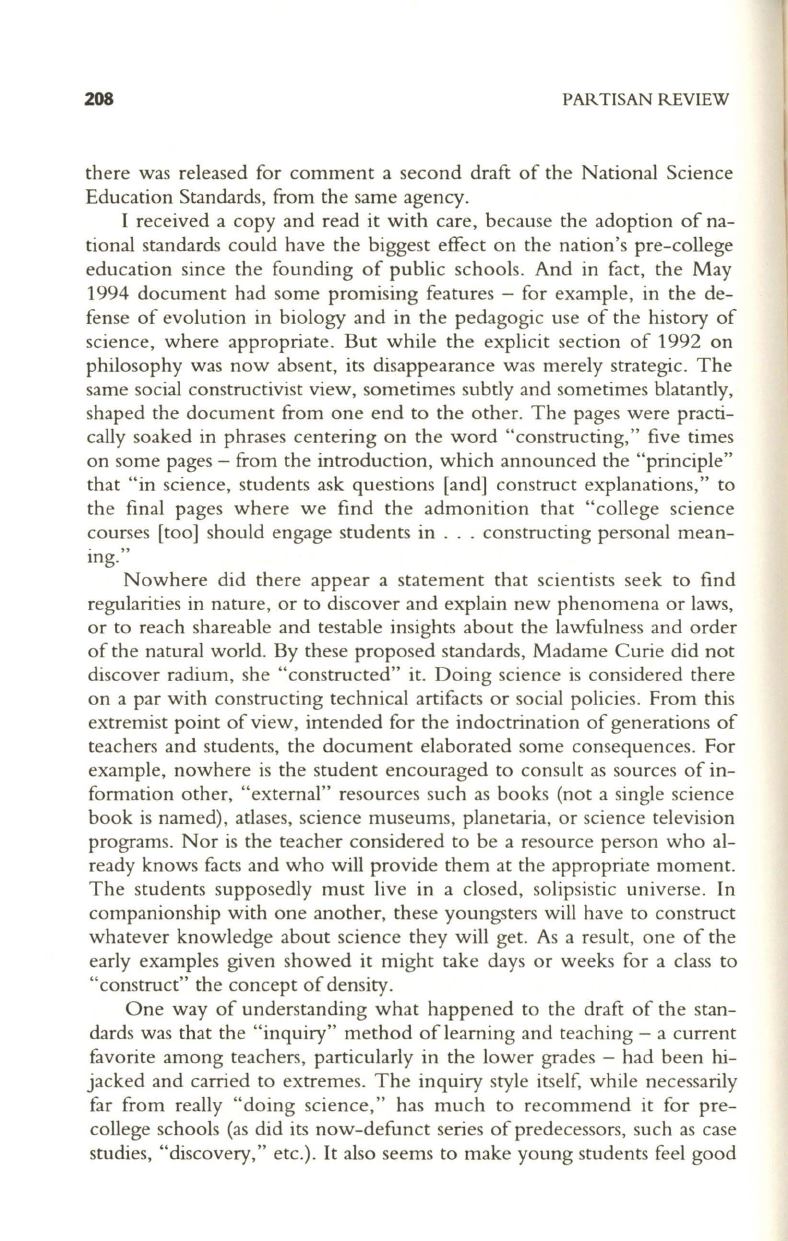
208
PARTISAN REVIEW
there was released for comment a second draft of the National Science
Education Standards, from the same agency.
I received a copy and read it with care, because the adoption of na–
tional standards could have the biggest effect on the nation's pre-college
education since the founding of public schools. And in fact, the May
1994 document had some promising features - for example, in the de–
fense of evolution in biology and in the pedagogic use of the history of
science, where appropriate. But while the explicit section of 1992 on
philosophy was now absent, its disappearance was merely strategic. The
same social constructivist view, sometimes subtly and sometimes blatantly,
shaped the document from one end to the other. The pages were practi–
cally soaked in phrases centering on the word "constructing," five times
on some pages - from the introduction, which announced the "principle"
that "in science, students ask questions [and] construct explanations," to
the final pages where we find the admonition that "college science
courses [too] should engage students in ... constructing personal mean–
ing."
Nowhere did there appear a statement that scientists seek to find
regularities in nature, or to discover and explain new phenomena or laws,
or to reach shareable and testable insights about the lawfulness and order
of the natural world. By these proposed standards, Madame Curie did not
discover radium, she "constructed" it. Doing science is considered there
on a par with constructing technical artifacts or social policies. From this
extremist point of view, intended for the indoctrination of generations of
teachers and students, the document elaborated some consequences. For
example, nowhere is the student encouraged to consult as sources of in–
fonnation other, "external" resources such as books (not a single science
book is named), atlases, science museums, planetaria, or science television
programs. Nor is the teacher considered to be a resource person who al–
ready knows facts and who will provide them at the appropriate moment.
The students supposedly must live in a closed, solipsistic universe. In
companionship with one another, these youngsters will have to construct
whatever knowledge about science they will get. As a result, one of the
early examples given showed it might take days or weeks for a class to
"construct" the concept of density.
One way of understanding what happened to the draft of the stan–
dards was that the "inquiry" method of learning and teaching - a current
favorite among teachers, particularly in the lower grades - had been
hi–
jacked and carried to extremes. The inquiry style itself, while necessarily
far from really "doing science," has much to recommend it for pre–
college schools (as did its now-defunct series of predecessors, such as case
studies, "discovery," etc.).
It
also seems to make young students feel good


